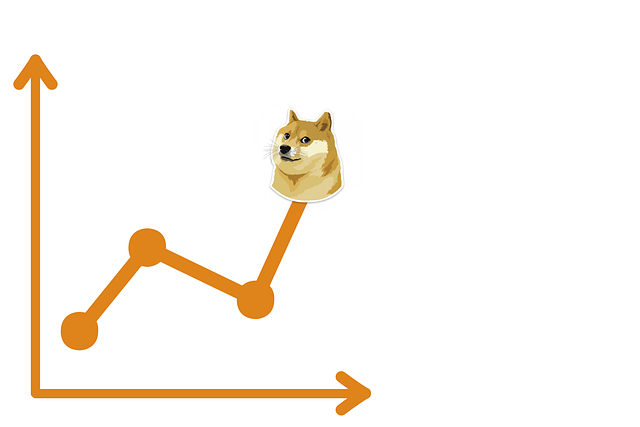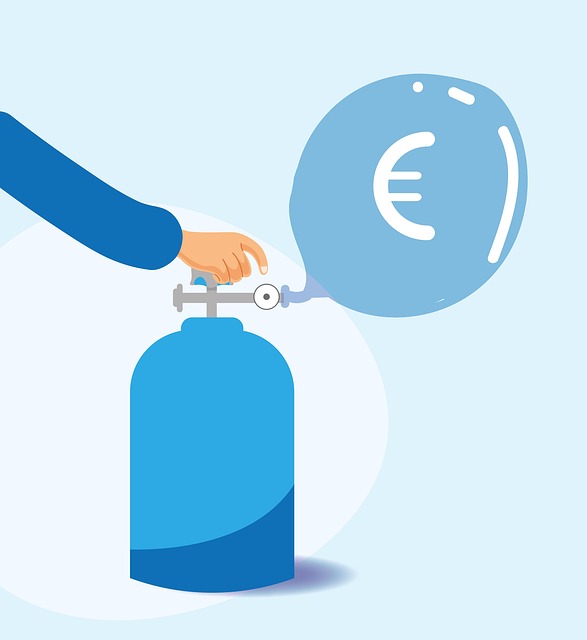XRP Predicted Future Price: Realistic Forecasts & Analysis
Author: Jameson Richman Expert
Published On: 2025-11-04
Prepared by Jameson Richman and our team of experts with over a decade of experience in cryptocurrency and digital asset analysis. Learn more about us.
XRP predicted future price is one of the most searched phrases among crypto investors looking for actionable forecasts and realistic scenarios for Ripple’s native token. This article summarizes technical, fundamental, macro, and on-chain factors that influence XRP’s price, offers specific price-range scenarios (short-, medium-, and long-term), and provides practical trading and risk-management steps you can use today. We also link to reputable resources, trading tools, and educational guides to help you test and refine strategies before committing real funds.

Why XRP Price Predictions Matter
Price predictions help investors and traders set realistic expectations, design portfolio allocation, and implement risk controls. Unlike pure speculation, a structured price forecast blends:
- Fundamental analysis — legal outcomes, adoption by banks and payment providers, escrow mechanics;
- Technical analysis — trend, momentum, and key support/resistance levels;
- On-chain metrics — active addresses, exchange flows, whales, and supply dynamics;
- Macro context — interest rates, liquidity, regulation, and crypto market cycles.
Key Factors Driving XRP Predicted Future Price
1. Legal and Regulatory Environment
The SEC’s litigation with Ripple (SEC v. Ripple Labs) heavily influenced XRP’s price since late 2020. A clear, favorable regulatory outcome would remove a major overhang, likely improving market access and institutional interest. Conversely, prolonged uncertainty or adverse rulings could suppress liquidity and listings. Follow reputable sources for updates — for background, see the XRP page on Wikipedia and Ripple’s official site at ripple.com.
2. Adoption by Financial Institutions and Use Cases
XRP’s design for fast, low-cost cross-border settlements (via On-Demand Liquidity) drives long-term value if adoption scales. Partnerships, pilot programs, and live production usage by remittance firms or banks could materially increase transactional demand for XRP.
3. Supply Dynamics — Escrow & Circulating Supply
Ripple locked a large portion of XRP in escrow contracts, releasing small portions periodically. Monitoring escrow releases, redistribution, and net market sell pressure helps estimate supply-side risk. On-chain explorers and analytics platforms (e.g., CoinMarketCap for supply stats: CoinMarketCap — XRP) are useful for tracking changes.
4. Market Sentiment & Macro Conditions
Bitcoin-dominated crypto cycles historically influence altcoin performance. Liquidity conditions, risk appetite, and macro events (rate decisions, bank stress, inflation data) determine whether XRP follows broader market rallies or remains sidelined.
5. Technical and On-Chain Indicators
Technical analysis (moving averages, RSI, MACD, Fibonacci levels) helps identify traders’ control points. On-chain metrics — active wallets, exchange inflows/outflows, and large transfers — give early warnings of accumulation or distribution phases. Tools like TradingView and Glassnode are helpful; practice strategies risk-free using testnets or paper trading guides such as this one on testnet/paper trading: Does Binance have virtual trading? Guide to testnets & paper trading.
Short-Term (3–12 months) XRP Predicted Future Price: Scenarios
Short-term predictions are sensitive to news and market cycles. Below are three realistic scenarios assuming current market structure and liquidity:
- Bear / Continued Consolidation — XRP remains range-bound between a key support zone and resistance. Price target range: roughly -30% to -10% from current levels if the market lacks bullish catalysts.
- Base-Building / Moderate Bull — Signs of accumulation and improving macro sentiment push XRP up to the next resistance cluster. Price target range: +15% to +70%.
- News-Driven Bull — Favorable regulatory news or a major partnership lifts sentiment quickly. Price target range: +70% to +200+% (more likely as a temporary rally).
Example: If XRP trades at $0.50 today, a moderate bull could push it to $0.60–$0.85 in months, while a strong news-driven rally could aim for $0.85–$1.50. Tailor position sizing and protections to the scenario you consider most probable.

Medium-Term (1–3 years) XRP Predicted Future Price
Over one to three years the outlook is shaped by regulatory clarity, adoption growth, and whether crypto markets resume sustained bull runs. Consider these scenarios:
- Conservative Case: Slow adoption, ongoing regulatory friction. XRP could trade sideways with modest gains, perhaps in a 10–50% range from current prices.
- Base Case: Regulatory clarity and steady institutional adoption. XRP could reach previously held resistance areas, possibly returning to multi-year highs. Price range: +50% to +300% depending on broader market.
- Optimistic Case: Major rollout of payment channels and banking use-cases, combined with bullish crypto cycle. XRP could see several-fold appreciation and return to or exceed former all-time highs.
Concrete illustrative targets (hypothetical):
- Low-end: $0.60–$1.00
- Base: $1.00–$3.00
- High-end (optimistic): $3.00–$10.00+
These ranges assume global macro conditions that favor risk-on assets and increased crypto adoption. Remember to monitor key metrics: exchange listings, institutional custody, and clearing improvements.
Long-Term (3–10 years) XRP Predicted Future Price
Long-term forecasts depend mostly on adoption scale, global payment trends, and regulatory frameworks. If XRP becomes a widely used liquidity rail, long-term price appreciation could be significant. However, long-term forecasts contain high uncertainty and many variables.
Illustrative long-term scenarios:
- Low adoption / regulatory headwinds: XRP remains a niche asset; price could stay muted or decline in real terms.
- Moderate adoption: XRP serves as an on-demand liquidity asset in corridors with modest usage. Price may appreciate substantially relative to current levels.
- High adoption: If many financial institutions adopt XRP for settlements and cross-border flows scale globally, the token could become one of the top-value crypto assets. This would imply very large price increases, though such outcomes are speculative and depend on broad systemic change.
Technical Analysis Essentials to Watch
When forming an XRP predicted future price viewpoint, use these commonly applied technical tools:
- Moving Averages: 50-, 100-, and 200-day MAs reveal trend strength. A price above the 200-day MA often indicates a longer-term uptrend.
- Relative Strength Index (RSI): Overbought/oversold readings can time entries and exits.
- Fibonacci Retracement: Useful to identify potential support after retracements in an uptrend.
- Volume Profile: Volume confirmation validates breakouts or breakdowns.
- Support & Resistance Levels: Monitor major historical price clusters where buyers/sellers previously concentrated.
Example strategy: If XRP breaks above a multi-month resistance with volume above its 50-day average and RSI is not extreme, consider scaling into a long position with a stop below the breakout level. Use position sizing to limit a single-trade portfolio risk to a small percentage.

On-Chain Metrics & What They Reveal
On-chain activity can be an early indicator of accumulation or distribution:
- Active addresses: Increasing unique senders/receivers can signal growing usage.
- Exchange flows: Net inflows to exchanges often precede sell pressure; net outflows suggest accumulation or off-exchange storage.
- Large transfers: Whale movements from exchanges to cold storage usually indicate accumulation by long-term holders.
Combine on-chain metrics with market depth and order book data on exchanges to better gauge immediate supply/demand dynamics.
Common Price Targets from Analysts & Their Basis
Analyst price targets vary widely; some are purely technical, others factor in adoption and macro. Typical methods include:
- Technical extrapolation: Projecting historical patterns and Fibonacci extensions.
- Market-cap parity: Assigning XRP a target market cap relative to other payment networks or major crypto assets.
- Use-case modeling: Estimating transaction volume and liquidity needs if XRP powers specific corridors, then calculating implied token demand.
For instance, if XRP achieves a market cap equal to a fraction of current global remittance flows allocated to digital rails, modelers may derive a $X–$Y price. These exercises should be treated as scenario planning rather than certainties.
Risk Management: How to Trade XRP Responsibly
Trading or investing in XRP requires disciplined risk management:
- Define clear entry and exit points based on technical or fundamental triggers.
- Use stop-loss orders to guard against large downside movement.
- Limit position size so a single trade cannot damage your portfolio; typical guidance is 1–5% per trade depending on risk tolerance.
- Consider dollar-cost averaging (DCA) for longer-term accumulation to mitigate timing risk.
- Keep a percentage of capital in stable assets or cash to avoid forced selling during market shocks.

Where to Buy and Trade XRP
Choose exchanges with solid liquidity, security features, and compliance. Popular global exchanges that support XRP include:
- Binance (register) — high liquidity, advanced charting;
- MEXC (register) — competitive fees and alt listings;
- Bitget (register) — derivatives and copy trading;
- Bybit (register) — derivatives, options, and liquidity.
Before trading on any exchange, verify listing status for your jurisdiction and use two-factor authentication (2FA) and withdrawal whitelisting for security.
Signals, Strategies, and Simulated Trading
Using reliable trading signals and practicing strategies in a simulated environment helps reduce emotional trading errors. You can learn about top signal strategies and free tools here: Best crypto trading signals — free strategies & tools. If you’re new to live trading, paper trading or testnet environments let you rehearse plans without real capital; explore a practical guide in this article: Does Binance have virtual trading?.
Also, understand transaction and conversion fees when moving funds — learning how foreign transaction fees are calculated can save money when moving between fiat and crypto: How are foreign transaction fees calculated?
Example Forecasts and How They Were Derived
To illustrate how forecasts are built, here are two simplified examples using distinct methodologies:
Example 1 — Technical Breakout Model
- Premise: XRP breaks a multi-month resistance at $0.75 with 50% higher volume than average, holds above $0.75 for two weeks.
- Target: Fibonacci extension to $1.25–$1.50 as next logical resistance.
- Risk control: Stop-loss set below $0.70, position size limited to 2% of portfolio.
Example 2 — Adoption & Market-Cap Parity Model
- Premise: XRP captures 1% of global cross-border payments by volume, requiring X units of liquidity in rails based on transaction velocity.
- Calculation: Assume projected market cap needed = $Y billion; then divide by circulating supply to estimate price per token.
- Target: Long-term price derived: $2–$7 (highly scenario-dependent).
Both approaches require ongoing updates; use a mix of methods rather than relying on a single model.

Common Mistakes to Avoid When Using XRP Price Predictions
- Over-reliance on single data points (one news item or one indicator).
- Ignoring liquidity and slippage costs when projecting returns.
- Failing to account for regulatory or exchange delistings in your scenario planning.
- Chasing FOMO after large rallies — establish rules for re-entry and profit-taking.
- Neglecting to practice strategies in simulation: use testnets/paper trading first — see the testnet guide linked above.
Practical Tools and Resources
Recommended tools to refine your XRP predicted future price models and trade execution:
- Charting: TradingView (for TA and pattern recognition).
- On-chain analytics: Glassnode, Nansen, or CryptoQuant for flows and wallet activity.
- Market data: CoinMarketCap and CoinGecko for market cap and historical prices.
- Exchange order books: Use exchange APIs or the web interface to assess depth and slippage.
- Paper trading & testnets: Learn execution without risk with the guide here: testnets & paper trading guide.
Expert Opinions & Consensus
Research analyst views range widely. Some are conservative, pointing to regulatory uncertainty and oversupply risks; others are very bullish, assuming rapid banking adoption. When evaluating expert opinions:
- Check methodology — price-targets should explain assumptions.
- Look for consensus across independent analysts.
- Consider time horizon — short-term trade ideas differ from long-term investment scenarios.

How to Build Your Own XRP Price Prediction Model
Steps to create a reproducible, transparent model:
- Define the time horizon (short, medium, long).
- List core drivers (legal, adoption, macro, on-chain metrics).
- Gather data (historical prices, volume, active addresses, escrow releases).
- Choose a modeling approach: technical, fundamental, or hybrid.
- Backtest historical performance if using mechanical rules.
- Set clear risk and position-sizing rules tied to volatility measures like ATR.
- Review and update the model periodically with new data.
Summary: Practical Takeaways on XRP Predicted Future Price
Key actionable points:
- Maintain realistic expectations: a range of outcomes is possible; probability-weight models are more useful than single-point predictions.
- Keep an eye on regulatory developments — they can rapidly change the probability distribution for price outcomes.
- Use a combination of technical, on-chain, and fundamental indicators to derive signals and trade plans.
- Practice strategies on testnets or via paper trading before risking capital — see the testnet guide linked above.
- Monitor exchange flow and large transfers for early signs of accumulation or distribution.
- Choose reputable exchanges for execution — options include Binance, MEXC, Bitget, and Bybit (links above).
Final Notes and Risk Disclaimer
This article provides informational content and illustrative analyses — not financial advice. Cryptocurrency markets are volatile and unpredictable. Always do your own research and consider consulting a licensed financial advisor before making investment decisions. Use the linked educational resources to build your strategy: signal guides, fee calculators, and testnet/paper trading tutorials can reduce mistakes and improve execution. For example, you can learn how foreign transaction fees work to optimize fiat conversions here: How are foreign transaction fees calculated? and review free signal strategies at Best crypto trading signals.
Staying informed, practicing risk management, and using high-quality data will make your approach to the XRP predicted future price more robust and less subject to surprises.